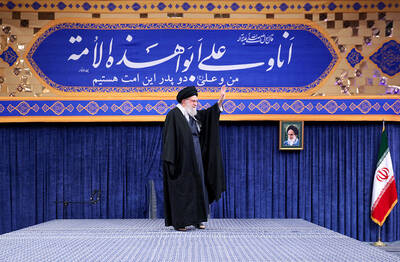
Iran’s supreme leader on Saturday said that “rioters must be put in their place” after a week of protests that have shaken the Islamic Republic, likely giving security forces a green light to aggressively put down the demonstrations.The first comments by 86-year-old Ayatollah Ali Khamenei come as vi
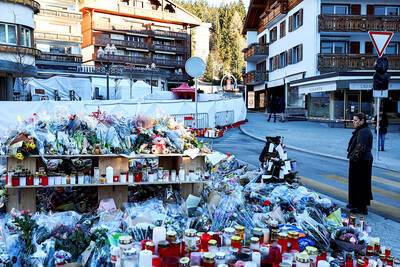
NEGLIGENCE? Swiss authorities are pressing charges of manslaughter, bodily harm and arson by negligence, while the owners said that all safety norms were followed
The managers of the Swiss ski resort bar where dozens died during a fire at a New Year’s celebration are under investigation for negligent manslaughter, authorities said on Saturday.French couple Jacques and Jessica Moretti owned and managed Le Constellation bar in Crans-Montana, which was crammed w
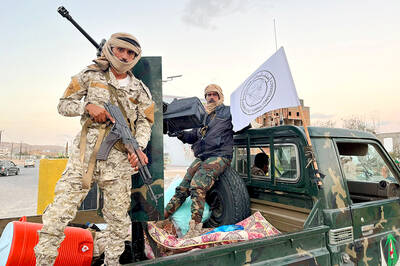
Saudi-backed troops on Saturday retook the resource-rich Yemeni province of Hadramawt, Yemen’s presidency said, after confrontations between forces backed by Riyadh and Abu Dhabi deepened a rift between the two Gulf allies.The Saudis and Emiratis have long supported rival factions in Yemen’s fractio

British and French warplanes carried out an airstrike in central Syria on an underground facility where members of the Islamic State (IS) group are suspected to have stored weapons and explosives, the British Ministry of Defence said yesterday.The strikes occurred on Saturday evening on a structure
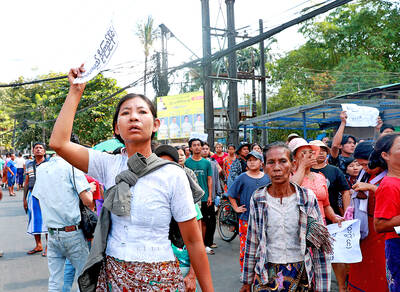
Myanmar’s pro-military party has a decisive lead in the first phase of junta-run elections, with the Union Solidarity and Development Party (USDP) winning 90 percent of the lower house seats announced so far, official results published in state media showed.The military grabbed power in a 2021 putsc
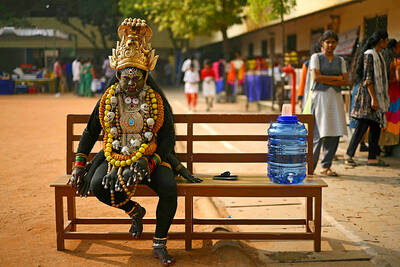
An artist dressed as Hindu goddess Bhadrakali rests before performing at the Veedhi Virudhu Vizha festival, which showcases traditional Indian art forms, in Chennai, India, yesterday.

PEACE PUSH: Ukrainian President Volodymyr Zelenskiy has said the US-brokered plan was ‘90 percent’ ready and shuffled his Cabinet ahead of a summit next week
Ukraine yesterday hosted security advisers for crunch talks as Kyiv insisted negotiations are zeroing in on a deal, while Russia claimed a deadly New Year strike torpedoed the efforts.Ukrainian President Volodymyr Zelenskiy said about 15 countries would attend the talks, along with representatives f

Yemen separatists on Friday announced a two-year transition to independence despite reporting 20 deaths in airstrikes from a Saudi Arabian-led coalition trying to roll back their weeks-long offensive across the country’s south.A separatist military official and medical sources reported 20 fighters d

US President Donald Trump on Friday said Washington was “locked and loaded” to respond if Iran killed protesters, prompting Tehran to warn that intervention would destabilize the region.Protesters and security forces on Thursday clashed in several Iranian cities, with six people reported killed, the

A magnitude 6.5 earthquake on Friday rattled Mexico’s capital and a tourist hotspot on the Pacific coast, killing at least two people and causing moderate damage in a small town near the epicenter.The US Geological Survey said the quake struck shortly before 8am near Acapulco, a major port and beach

UN Secretary-General Antonio Guterres on Friday called on Israel to end a ban on humanitarian agencies that provided aid in Gaza, saying he was “deeply concerned” at the development.Guterres “calls for this measure to be reversed, stressing that international non-governmental organizations [NGOs] ar

‘NOT JUST ARTIFACTS’: The Piprahwa gems, believed to date back to 200BC, are timeless symbols of peace, compassion and shared heritage, Pirojsha Godrej said
Sacred ancient gems linked to the Buddha were unveiled yesterday in India for the first time since their colonial-era removal.The Piprahwa gems, a collection of more than 300 precious stones and ornaments believed to have been buried with relics of the Buddha at a stupa site in northern India, were
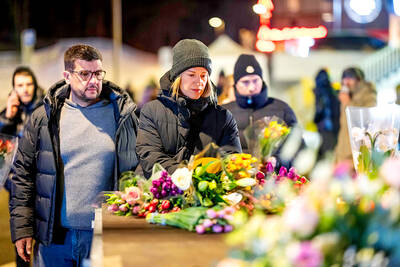
DEADLY BLAZE: Officials said dental and DNA samples were being used to assign names to the bodies, while only five of 112 people injured remain unidentified
Investigators yesterday set about the painful task of identifying the burned bodies of a blaze that engulfed a crowded bar and killed about 40 people at a New Year’s Eve party in the upscale Swiss ski resort of Crans-Montana.So severe were the burns on the mostly young crowd of revellers in the Le C
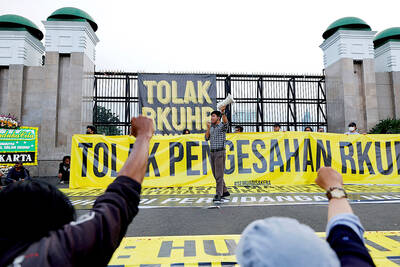
Indonesia yesterday began enforcing its newly ratified penal code, replacing a Dutch-era criminal law that had governed the country for more than 80 years and marking a major shift in its legal landscape.Since proclaiming independence in 1945, the Southeast Asian country had continued to operate und
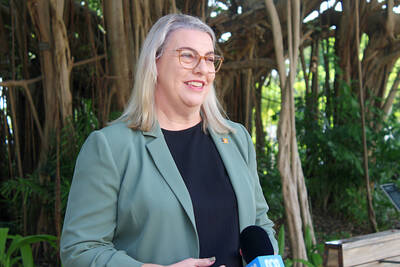
The first place in the world to legalize voluntary euthanasia 31 years ago could this year become the last part of Australia to secure the same legal reform, as the Northern Territory government yesterday announced plans to legislate for doctor-assisted dying for a second time.The Northern Territory
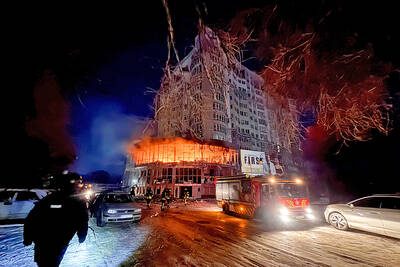
TRADING ALLEGATIONS: Moscow said Kyiv killed 24 people in a drone strike on a hotel and cafe, while the latter said Russia hit its rail and energy infrastructure
Russia and Ukraine accused each other of targeting civilians over the New Year, with Moscow reporting a deadly strike on a hotel in territory it occupies in southern Ukraine, while Kyiv said there had been another broad attack on its power supplies.“On New Year, Russia deliberately brings war. Over
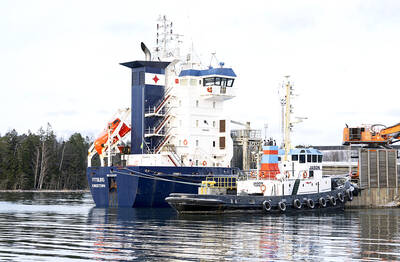
A vessel seized in Finland suspected of damaging a telecommunications cable between Helsinki and Tallinn was transporting Russian steel targeted by EU sanctions, Finnish Customs said on Thursday.Finnish police on Wednesday detained the Fitburg, a 132m long cargo ship en route from St Petersburg, Rus

Saudi Arabian authorities executed 356 people last year, an Agence France-Presse (AFP) tally showed, setting a new record for the number of inmates put to death in the kingdom in a single year.Analysts have largely attributed the surge in executions to Riyadh’s ongoing “war on drugs” — with many of
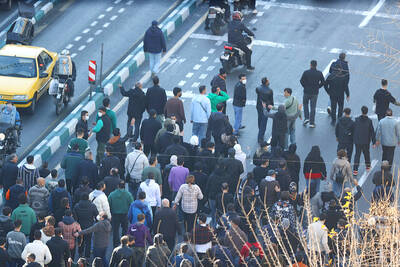
GROWING: The protests, which started with shopkeepers in Tehran, spread to other provinces after students joined in earlier this week amid the rapid depreciation of the rial
A volunteer member of Iran’s Islamic Revolutionary Guard Corp was killed in a western province during widening demonstrations sparked by the country’s ailing economy, authorities said yesterday, marking the first fatality among security forces during the protests.The death on Wednesday night of the

HOPE AND TREPIDATION: A Gaza City resident bid farewell to a year lived under terror, while in Syria, a resident forecast a good year under new leadership
Revelers around the world yesterday toasted the start of the new year, bidding farewell to a volatile year when temperatures soared, US President Donald Trump upended global trade and the brutal conflict in Ukraine raged on.While a fragile truce took hold in devastated Gaza, violence in Sudan contin
